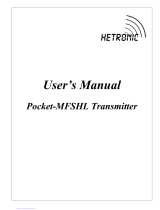
LB8109*/FB8209*
Maximum Number of Channels and I/O Modules
199401 2016-03
15
4 Maximum Number of Channels and I/O Modules
The maximum number of channels depends on the I/O modules in use, as the I/O modules
offer a different number of channels depending on the module type and width.
The maximum number of I/O modules per remote I/O unit is determined by the following
factors.
1. Slots on the backplane and width of the I/O modules
2. Size of the com unit memory for input and output data
3. Length of DP configuration string
4. Power supply via the relevant units on the backplane
Slots on the Backplane and Width of the I/O Modules
Fixed slots are reserved on the backplane for com units and power supplies. The slots for I/O
modules have equal status, meaning functions can be arranged side by side as required.
Depending on how many single-width and double-width I/O modules you use, varying numbers
of I/O modules can be accommodated on the backplane.
Size of the Com Unit Memory for Input and Output Data
From firmware version 9.06 onwards, the memory for input and output data is a total of
240 octets. With symmetrical distribution, 120 octets are available for input data and 120 octets
for output data. An asymmetric distribution of 0 octets input data and 240 octets output data to
240 octets input data and 0 octets output data is likewise possible. The distribution is made in
steps of 8 octets.
With firmware version 9.06 and higher, the memory for input and output data totals 480 octets.
There are 240 octets available for input data and 240 octets for output data. However, an
asymmetric distribution is not possible.
Length of DP Configuration String
The DP configuration string contains the configuration code of the slots on a backplane and is
limited to 96 octets. Ensure that the configuration code of the following I/O modules and com
units is longer than that of the other I/O modules. See chapter 6.10
■
LB4104, FB4204 output isolator
■
LB4*05, FB4*05 HART output isolator
■
LB4106 HART output isolator
■
Com unit with global status/command register and module status
Empty slots located upstream of the last I/O modules also have a configuration code. These
empty slots must also be taken into account when considering the length of the DP
configuration string.
Power Supply via the Relevant Units on the Backplane
The level of power available is dependent on several factors.
Tip
Use an FDT frame application such as
PACTware TM
and the device type manager (DTM) for
LB/FB to test different configurations of the remote I/O unit.
The DTM automatically checks the following aspects:
- Number of slots on the backplane
- Module types supported by the com unit firmware
- Size of the com unit memory for input and output data
- Compliance with the maximum length of the DP configuration string
- Power supply for all modules and whether sufficient power is available






















